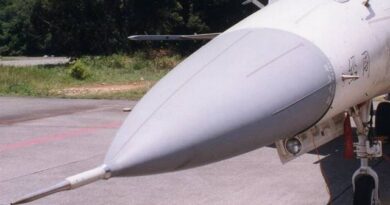The Sterile Cockpit/Flight Deck Concept
The Sterile Cockpit/Flight Deck concept refers to the practice of maintaining a distraction-free environment during critical phases of flight. It is an important safety measure that helps to prevent accidents and incidents caused by distractions or unnecessary communication. This article will explore the concept in more detail, its history, and its application in the aviation industry.
History of the Sterile Cockpit/Flight Deck Concept
The Sterile Cockpit/Flight Deck concept has its roots in the aviation industry’s efforts to improve safety. It was first introduced in the 1950s as a response to accidents caused by pilot distraction. The concept was then formalized in the 1980s by the Federal Aviation Administration (FAA) in the United States, which mandated that pilots maintain a distraction-free cockpit during takeoff, landing, and other critical phases of flight.
Application of the Sterile Cockpit/Flight Deck Concept
The Sterile Cockpit/Flight Deck concept applies to all commercial aviation operations and requires pilots to refrain from non-essential communication during critical phases of flight. These phases include taxiing, takeoff, climb, descent, landing, and any other time when the aircraft is below 10,000 feet. During these phases, pilots are required to focus on their tasks and maintain a clear line of communication with air traffic control and other crew members.
The concept is not limited to verbal communication. It also applies to any other form of distraction, such as reading, writing, or using electronic devices. Pilots are required to avoid all non-essential activities that could distract them from their duties or compromise safety.

Benefits of the Concept
The Sterile Cockpit/Flight Deck concept has proven to be an effective safety measure in the aviation industry. It helps to reduce distractions and improve communication between pilots and air traffic controllers. This, in turn, reduces the likelihood of accidents caused by human error.
Additionally, the Sterile Cockpit/Flight Deck concept encourages a culture of safety in the aviation industry. It reinforces the idea that safety is a shared responsibility and requires everyone’s cooperation. By promoting a distraction-free environment, this concept helps to ensure that all crew members are focused on their tasks and are ready to respond to any emergency situation that may arise.
Conclusion
The Sterile Cockpit/Flight Deck concept is a critical safety measure in the aviation industry. It helps to reduce distractions and improve communication between pilots and air traffic control during critical phases of flight. By maintaining a distraction-free environment, the concept promotes safety and ensures that all crew members are focused on their tasks. The concept is a vital part of the aviation industry’s ongoing efforts to improve safety and prevent accidents caused by human error.
References:
- Federal Aviation Administration. (2009). Advisory Circular AC 120-71: Standard Operating Procedures for Flight Deck Crewmembers. Retrieved from https://www.faa.gov/documentLibrary/media/Advisory_Circular/120-71B_Chg_1.pdf
- Aviation Safety Network. (n.d.). Sterile Cockpit. Retrieved from https://aviation-safety.net/investigation/study/statistics-and-data/sterile-cockpit


